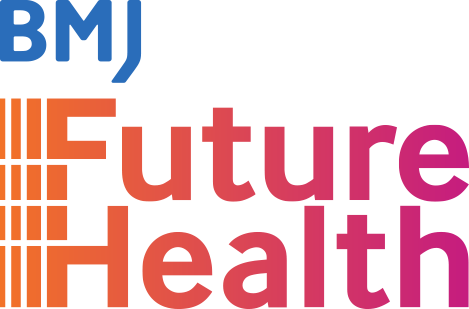How to make the organisational-level changes to support and optimise remote consultations
If you ask Google Images to show you ‘digital healthcare’ or ‘remote consultations’, you will find pictures of an individual patient (usually a young professional) talking to their doctor over a smartphone video link, with the digital connection working smoothly and all the necessary infrastructure in place. The appearance is one of efficient, personal care through a state-of-the-art link.
The reality of remote and digital healthcare is often a far cry from this, with most remote services dependent more on telephone than video and featuring breakdowns, glitches, discontinuities and other stressful complexities.
This webinar takes this messy reality as its starting point. We will offer no magic solutions (we all know that ‘muddling through’ is often needed). But we will offer some evidence-based ways of improving the embedding of remote and digital pathways and services, with a focus on access and equity, safe triage, avoidance of inefficiencies (such as double-handling) and staff training and support.
The presentation draws on our 15 years’ experience studying remote and digital healthcare in both primary and secondary care.
Experts:
- Trish Greenhalgh, Professor of Primary Care Health Sciences, University of Oxford
- Emma Ladds, Wellcome Trust DPhil Student, University of Oxford, GP Partner, Eynsham Medical Group
Summary of the webinar:
This BMJ Future Health webinar explored organizational-level changes to optimize remote consultations in healthcare. The discussion focused on how to create effective, safe, and inclusive remote consultation systems, addressing both opportunities and challenges in digital healthcare delivery.
Key Topics Covered:
1. Complexity of Implementing Remote Consultations
- Remote consultations are complex; there is no one-size-fits-all approach.
- Healthcare systems should balance values, constraints, and practicalities, then iterate and adapt.
- Framework for complexity management:
- Define values and priorities (e.g., equity, efficiency).
- Recognize real-world constraints (e.g., workforce limitations).
- Monitor, reflect, and adjust over time.
2. Research Insights on Remote Consultations
- Findings from the "Remote by Default 2" study (2-year UK-wide research on GP practices).
- Methods included ethnography, interviews with patients, clinicians, and policy leaders, and workshops on key challenges.
3. Benefits of Remote & Digital Healthcare
- Increased accessibility & convenience (e.g., a student accessing mental health support remotely).
- Efficient workflow management via asynchronous communication.
- Better continuity of care when digital systems are used effectively.
- Scalability – allowing information-sharing and triage improvements.
4. Challenges & Risks of Digital-First Healthcare
- Digital Exclusion & Health Inequities:
- Example: "Amir," a digitally-excluded patient, struggled to navigate online-only healthcare.
- Patients must "digitally package" their symptoms for triage, which can disadvantage those with low health/digital literacy.
- Risk of self-exclusion – patients who have poor experiences may avoid care.
- Continuity of Care & Fragmentation:
- Example: "Jane," a patient needing end-of-life care, faced disjointed communication across multiple providers.
- Challenges in integrating remote consultations across multiple healthcare teams.
- Technology can either improve or worsen care coordination, depending on how it’s implemented.
- Safety Risks in Remote Care:
- Example: "Mrs. Benson," a patient whose urgent condition was missed due to a telephone triage error.
- Avoiding serious safety incidents requires:
- Cautious triage (erring on the side of face-to-face when needed).
- Flexible workflows to adjust urgency levels.
- Breaking rigid rules when necessary to ensure patient safety.
5. Workforce & Training Implications
- Staff stress & "techno-stress": Example: "Brenda," an experienced receptionist, struggled with increasing digital demands.
- Training must reflect actual job roles – technology adoption requires realistic and adaptable training programs.
- Clinicians need guidance on supervising & coordinating remote care.
Q&A Highlights
- Is smartphone ownership a key factor in digital healthcare adoption?
- Yes, but digital literacy & support networks matter more than simply owning a device.
- Patients with social/family support are more likely to navigate digital health systems.
- Are telephone consultations becoming obsolete?
- No. The telephone remains crucial for many patients and clinicians due to its dependability & accessibility.
- Future: More patient choice & multimodal options (text, video, in-person).
- Should patients receive digital access to blood results?
- Yes, but with careful expectation management.
- Patients should receive clear guidance on when results are concerning vs. routine variations.
Conclusions & Takeaways
- Remote care is complex – success requires adaptive, values-driven implementation rather than rigid plans.
- Digital healthcare must be equitable – proactively identify & support vulnerable patients.
- Continuity of care is at risk with digital health – deliberate effort is needed to integrate systems effectively.
- Remote care is generally safe – but staff vigilance, flexibility, and creativity are key to preventing errors.
- The workforce must be trained & supported – digital transformation should not alienate experienced staff.
Next Steps & Resources:
- Webinar recordings will be available on the BMJ Future Health website.
- Academic papers & research links (QR codes provided).
- BMJ Future Health Event (November 2025): Open for registration.
- "Call for Problems" initiative – Submit healthcare challenges for expert solutions.
This webinar provided valuable insights into the realities of remote consultations, highlighting both their transformative potential and the challenges that healthcare systems must overcome. 🚀


